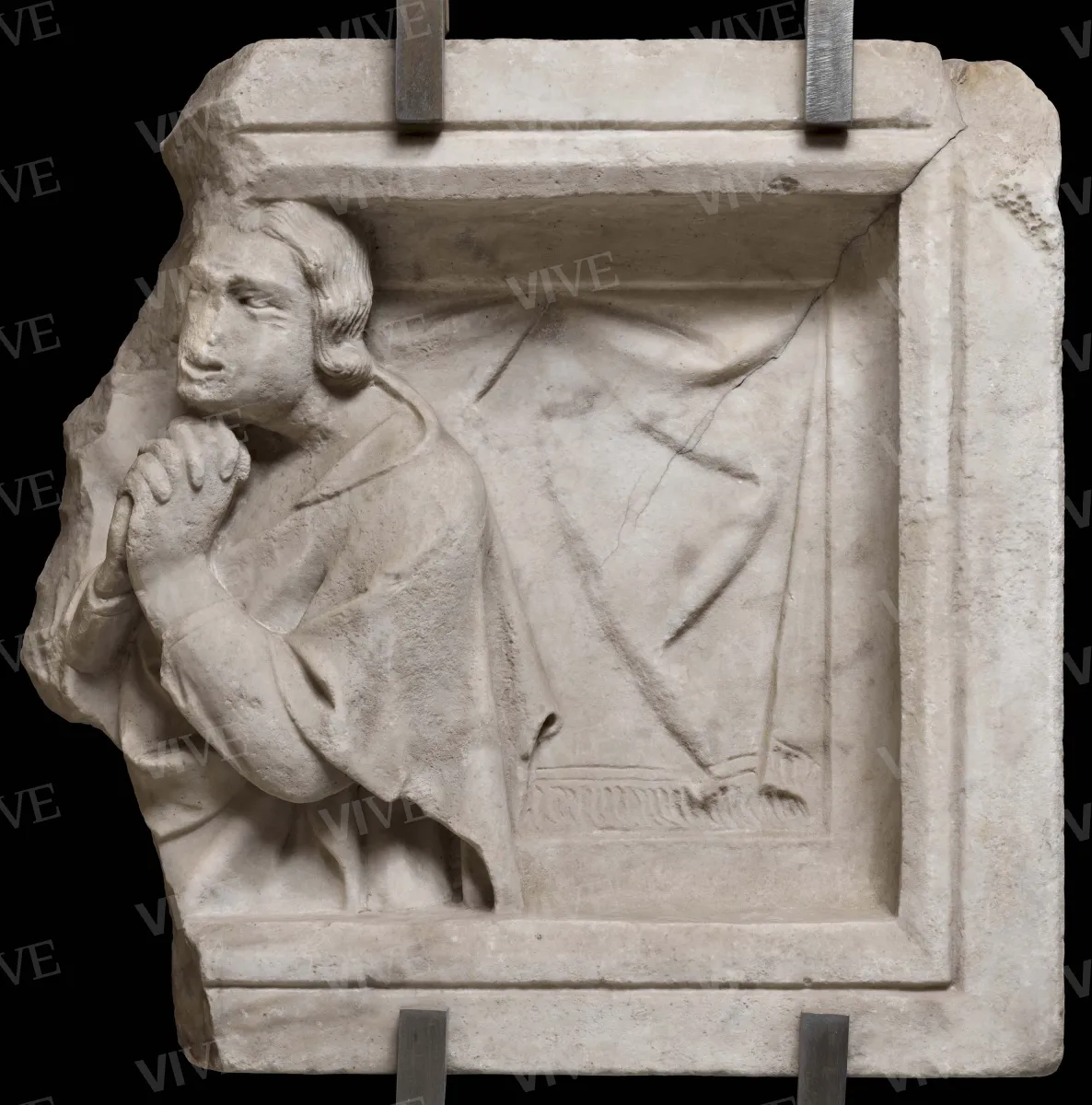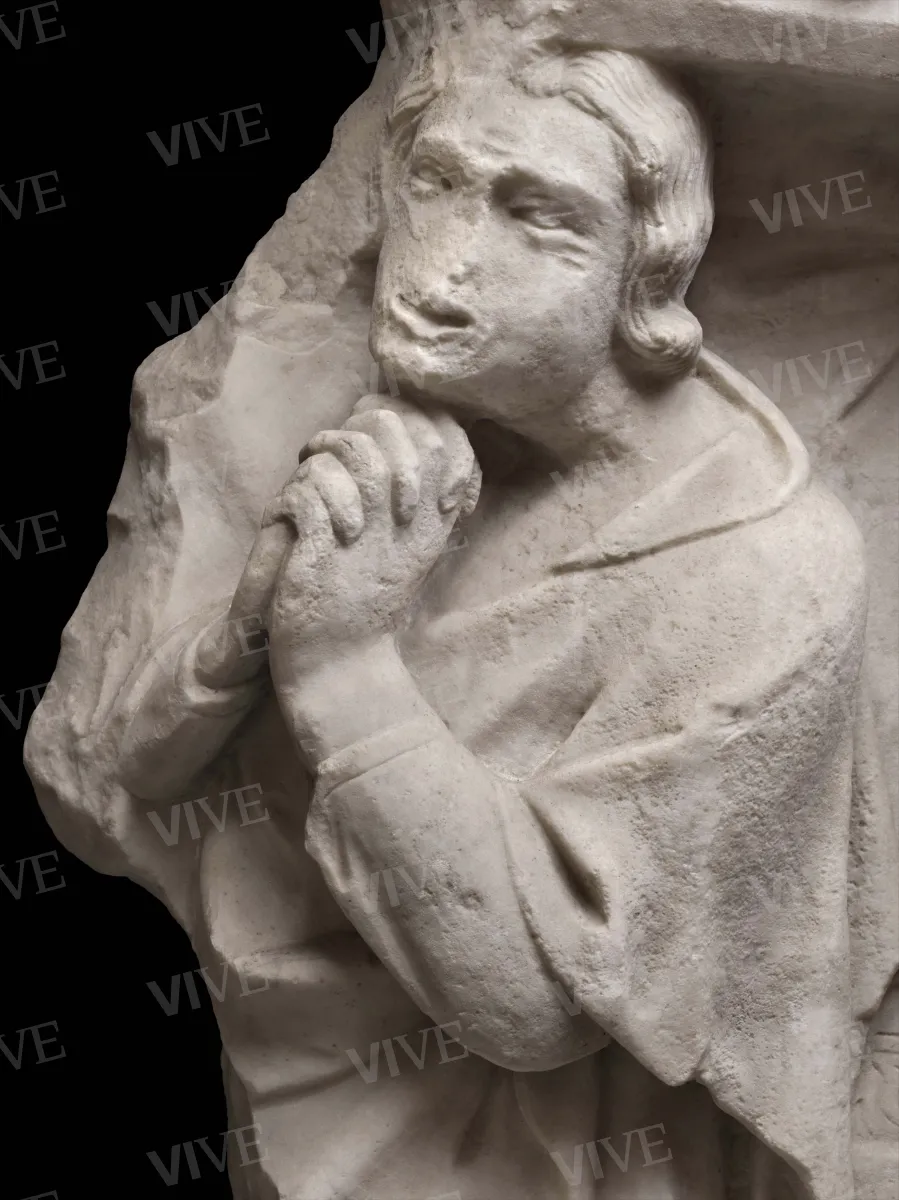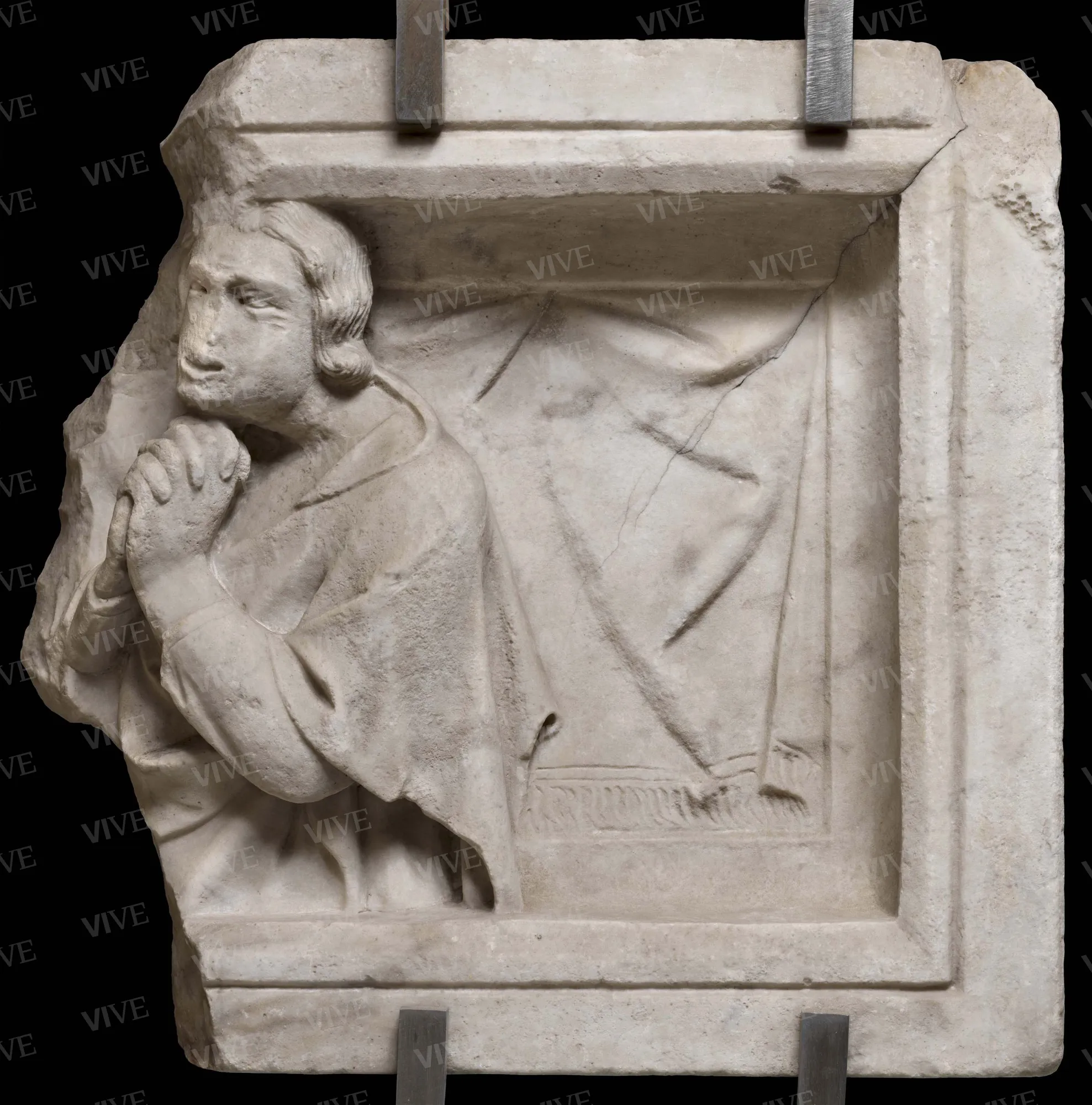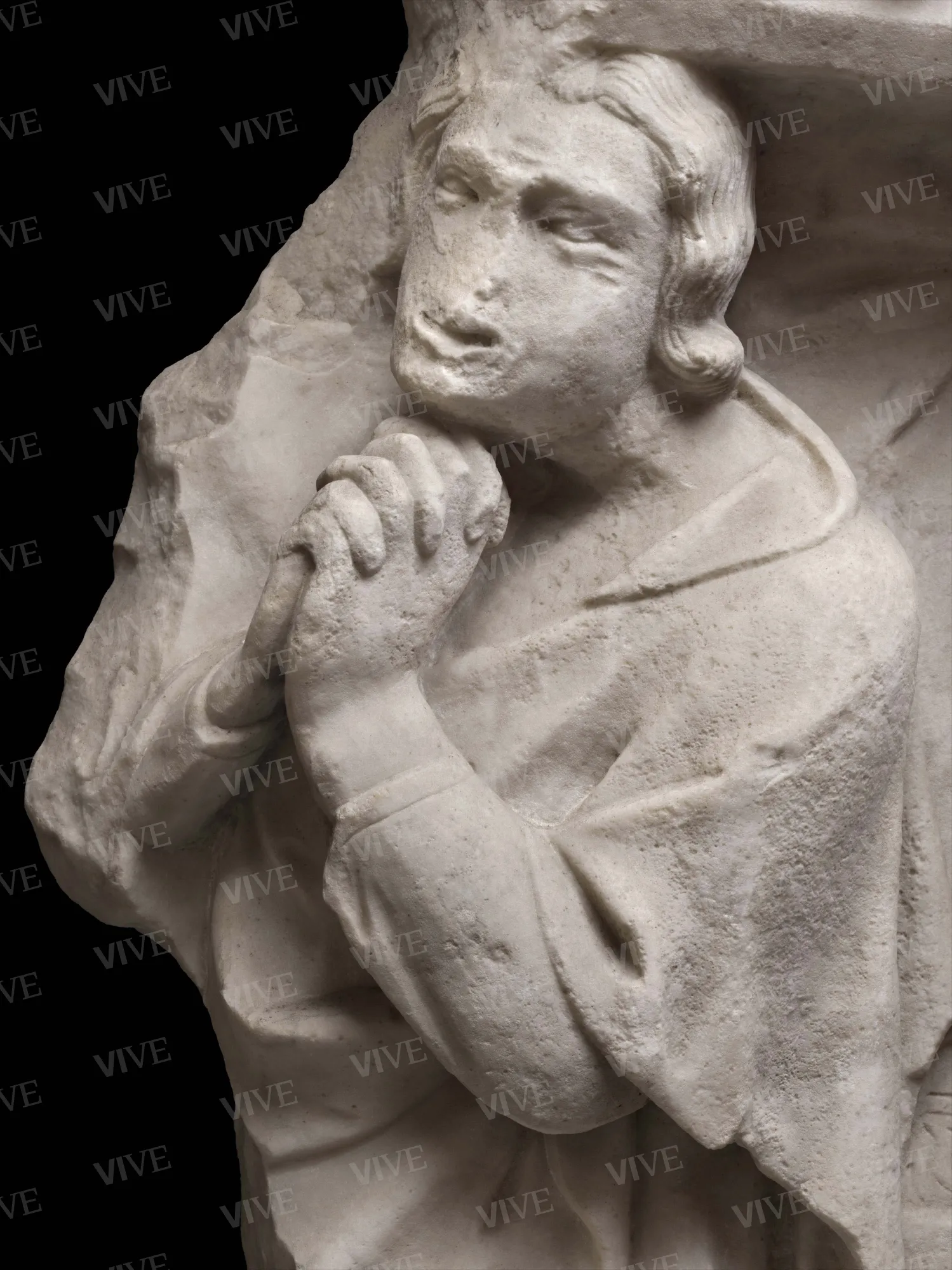Fragmentary relief with figure of mourner
Follower of Tino di Camaino Mid-14th century
The fragment shows the half-length figure of a young man, his hands clasped in the act of mourning, silhouetted against the background of a slightly undulating curtain, with a fringe running along the lower edge; the figure is wrapped in a softly draped robe. The mourner is facing to the left of the viewer and stands right on the fractured edge of the relief. The outer frame of the piece is smooth and traversed by a line bordering an inner, foreshortened frame. The background is barely delineated; there are several holes along the top and bottom edges.
The fragment shows the half-length figure of a young man, his hands clasped in the act of mourning, silhouetted against the background of a slightly undulating curtain, with a fringe running along the lower edge; the figure is wrapped in a softly draped robe. The mourner is facing to the left of the viewer and stands right on the fractured edge of the relief. The outer frame of the piece is smooth and traversed by a line bordering an inner, foreshortened frame. The background is barely delineated; there are several holes along the top and bottom edges.
Details of work
Catalog entry
Initially attributed to a Roman sculptor by Hermanin (1948, 260), the fragment was later attributed to Tino di Camaino by Santangelo (1954, 11). In his entry, OA Tomei (1979) accepted the attribution to Tino but was persuaded that the work was that of a follower of Tino di Camaino. The stiff and somewhat dry lines of the relief and uncertainties in the execution actually make it more likely that the work was undertaken by a follower or close collaborator of the artist, whose work can be seen in characteristic features such as the large hands, the prominent jaw, and the execution of the hair. The iconography and general structure of the fragment suggest that it was part of the front of a funerary monument, modeled on those executed by Tino di Camaino during his long stay in Naples from 1323 to 1336.
Stefania Paone
Entry published on 12 February 2025
State of conservation
Good.
Restorations and analyses
Restorations: 1953; 1984; 2002–2003.
The fragment has also been cleaned on several occasions.
Provenance
Collezione Evan Gorga, formerly in the Museo di Castel Sant’Angelo from 1911;
Rome, Museo di Palazzo Venezia from 1919.
Sources and documents
Tomei Alessandro, Inventory sheets. Soprintendenza ai Beni artistici e storici di Roma, October 1979.
References
Hermanin Federico, Il Palazzo di Venezia, Roma 1948, p. 260;
Santangelo Antonino, Museo di Palazzo Venezia. Catalogo delle sculture, Roma 1954, p. 11;
Casanova, Maria Letizia, Il Museo del Palazzo di Venezia, Roma 1994, p. 4;
Garms, in Garms Jörg, Sommerlechner Andrea (a cura di), Die mittelalterliche Grabmäler in Rom und Latium von 13. bis zum 15. Jahrhundert, 2, Die Monumentalgräber, Wien 1994, pp. 174-175;
Latini Marcello, Il Lapidarium medievale del Museo Nazionale del Palazzo di Venezia in Roma, Tesi di Dottorato, Università della Tuscia, a.a. 1998-99, pp. 316-324;
Gianandrea, in Barberini Maria Giulia (a cura di), Tracce di pietra. La collezione dei marmi di Palazzo Venezia, Roma 2008, pp. 219-220, n. 54.














